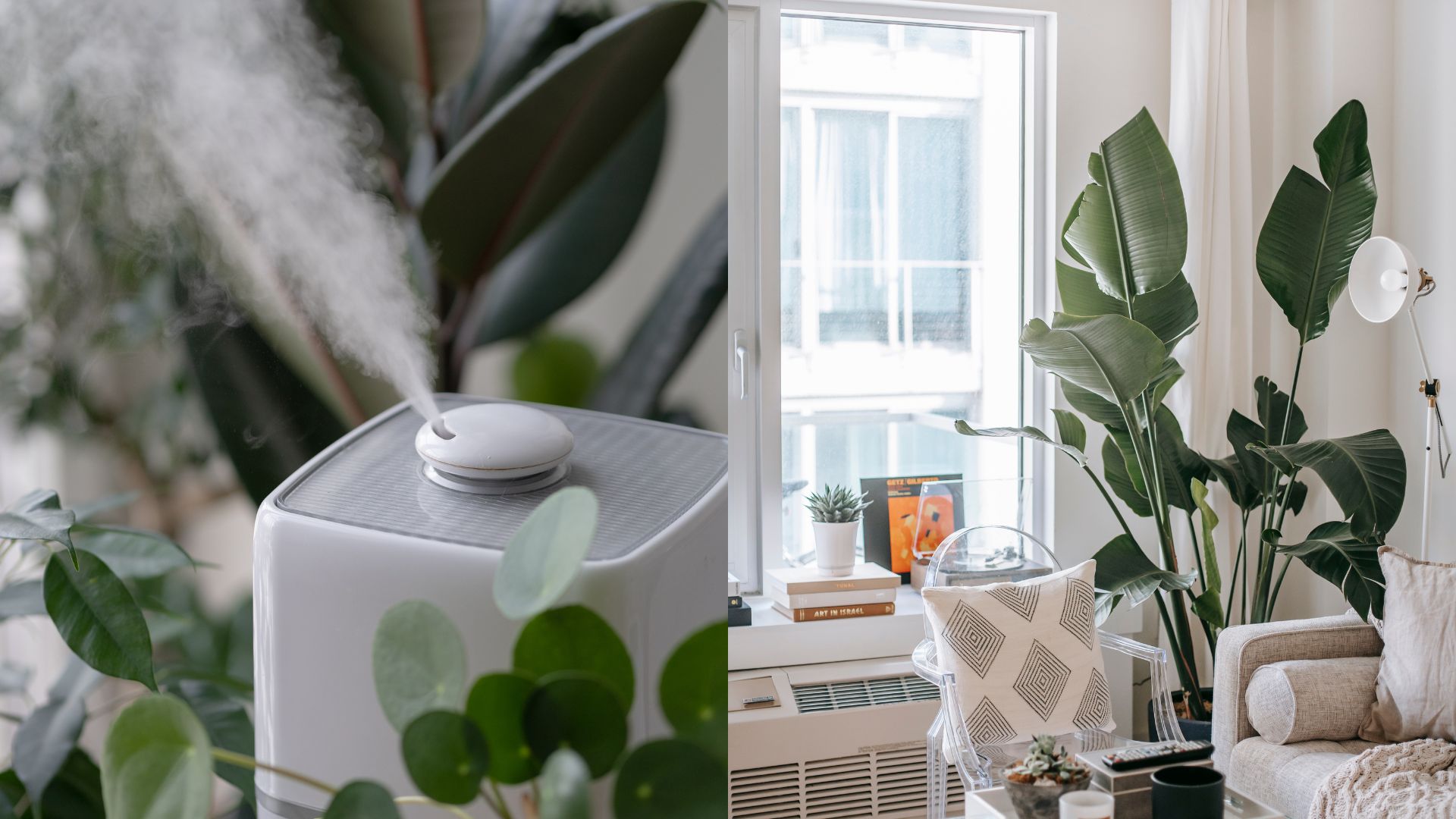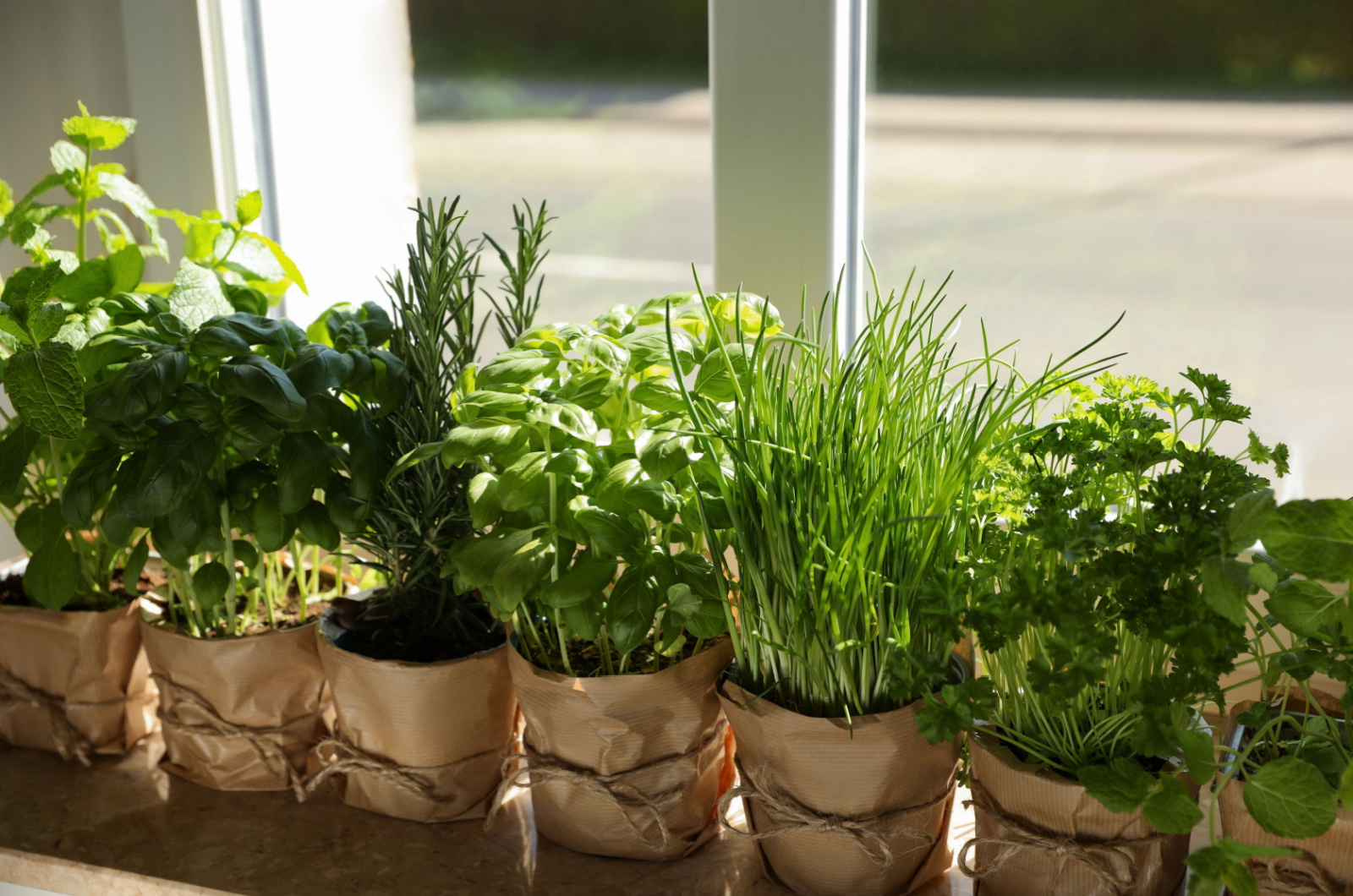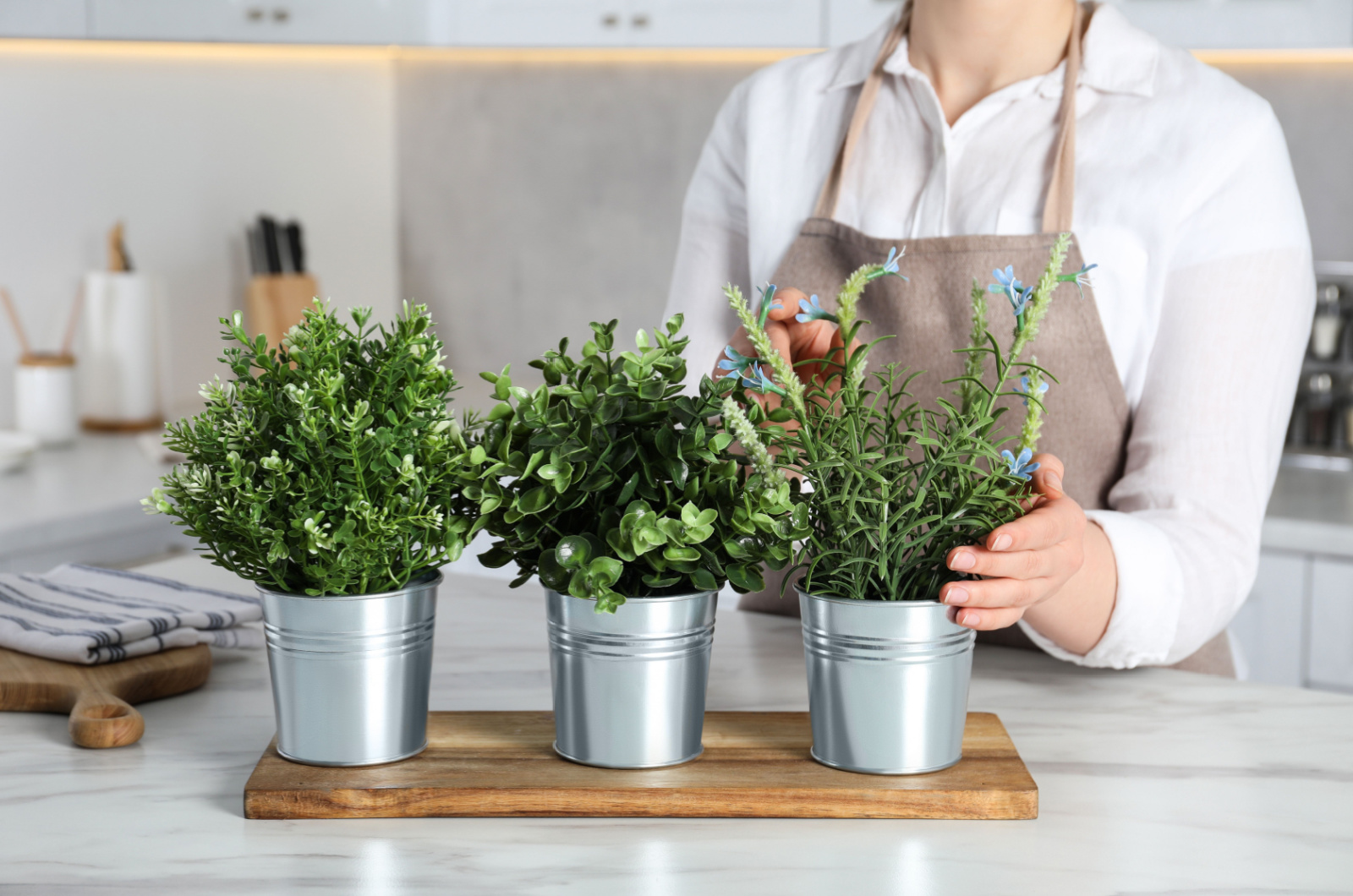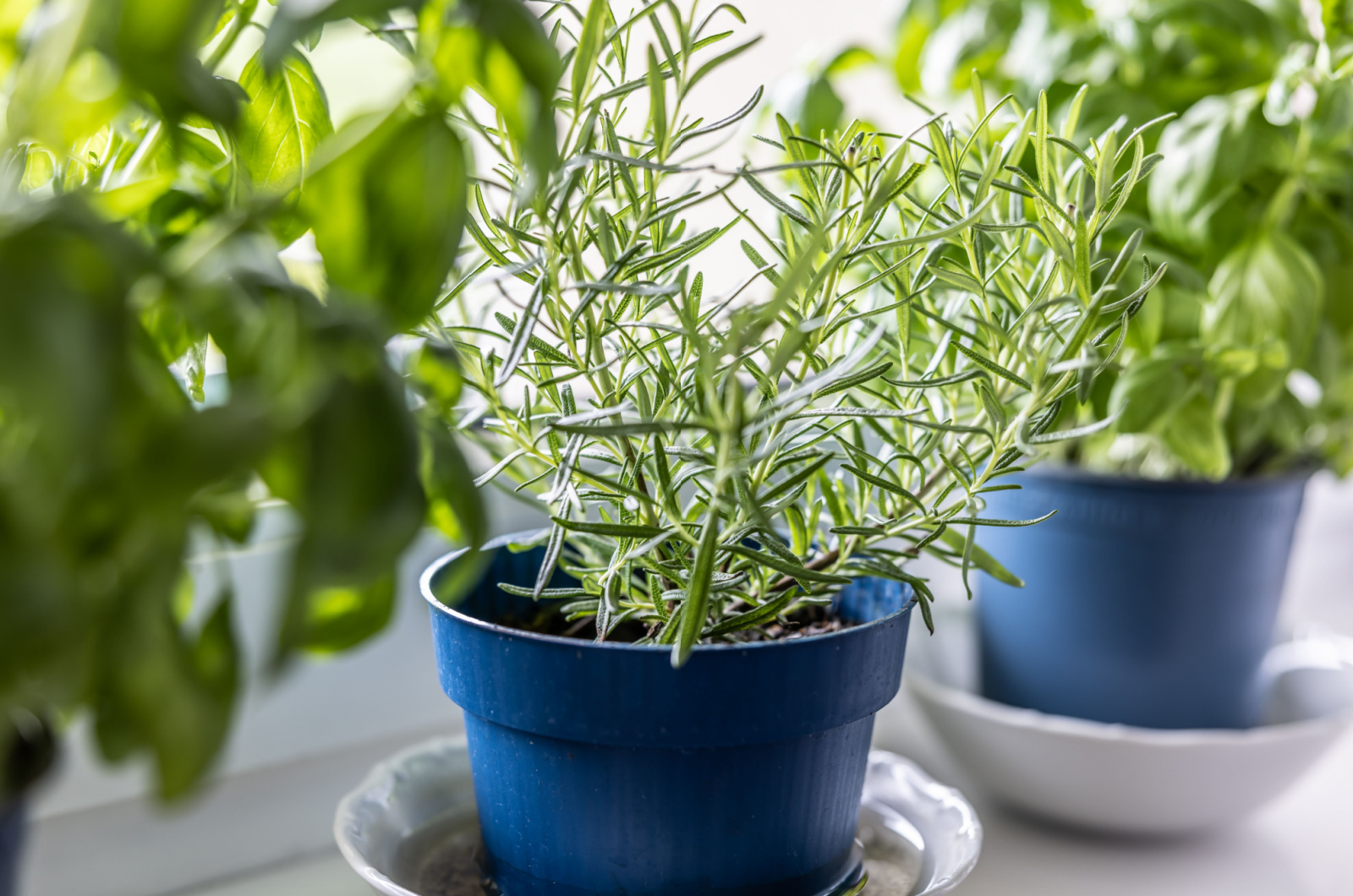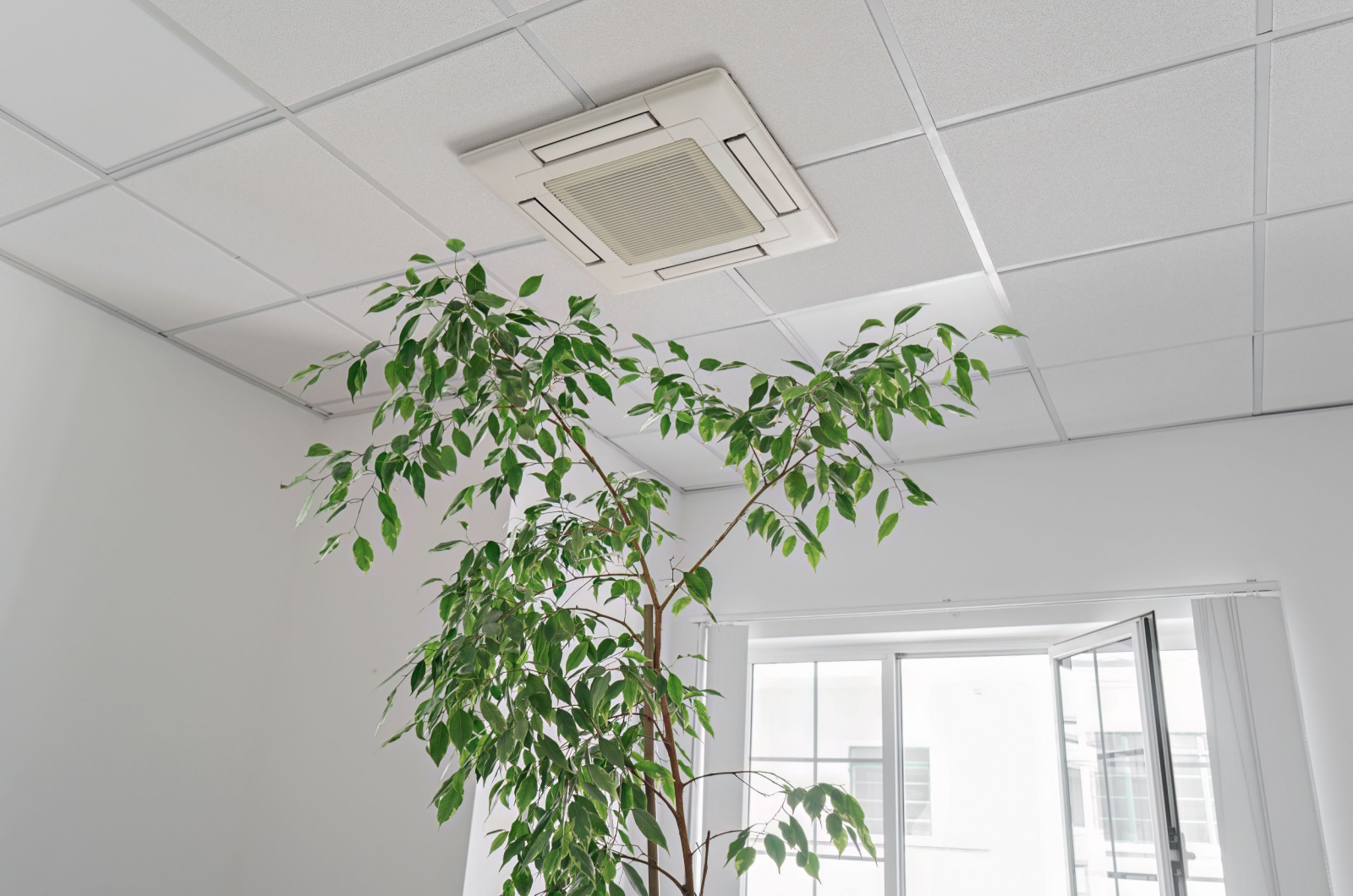Cold season is finally upon us and we all know what that means – heating. But even though it feels great for you, your houseplants may not agree.
Sure, they love being too warm, but keeping them too close to heaters, fireplaces, and AC can put them in a state of shock.
They either get burned or the humidity gets drastically low. This can result in flower drop (especially when it comes to orchids), wilting, and stooping appearance.
So, if you want to avoid all these issues, simply keep your green buddies away from these appliances.
How? Here are some ideas!
Let’s get started!
#1 Protecting Indoor Plants From Floor Heating
Floor heating is a life saver on cold mornings for us, but our plants wouldn’t agree. It can keep their roots very warm, causing them to go into shock. And once the heating is off, the drastic temperature change will stress them even more.
Luckily, you can easily get around this issue. Simply put your houseplants on higher ground, such as a plant stand, flower shelf, coffee table, or dresser.
Also, you can transfer some of your climbing and vining plants into hanging baskets if they’re not growing there already. And if you’ve ever wondered why you should get a plant caddy, protecting your plants from floor heating is a great reason.
Finally, if your plants are simply too tall and heavy to be lifted onto shelves, stands, and tables, you can always insulate the ground with thick cork mats or similar materials.
#2 Protecting Houseplants From Radiators And Fireplaces
A crackling fire and the warmth it spreads on cold winter nights is an unforgettable experience. And yet, your houseplants hate it from their core, as well as being close to radiators.
Their leaves could get burned, the plant could wilt, and when the humidity inevitably gets too low, you’ll notice browning of the foliage and crisp tips and margins, too.
The solution is simple – keep your plants as far from radiators, fireplaces, and other heaters as possible. You’ll know it’s far enough if you can’t feel heat with your hand anymore.
But this isn’t the only thing you need to do in order to combat heat stress caused by central heating. You need to raise humidity levels to keep your plants happy.
The best thing to do is get a humidifier, but if that’s not an option, you can always mist your houseplants every couple of days.
Also, you can try grouping your plants with similar humidity requirements together to create a microclimate more saturated with moisture.
Just know that pebble trays don’t work well for humidity and can only help your smallest houseplants (I’m talking 5-7 inches). And even then, the increase in air moisture is usually not enough.
Additionally, you can try using an indoor greenhouse (if your budget allows it) to trap some humidity in or grow certain plants in terrariums.
Another thing that can help your plants is moving them to a more humid environment, such as a kitchen or bathroom. Just make sure your green buddies have enough light.
And don’t forget to irrigate your plants. Even though it’s winter, they still need moisture, so water your houseplants whenever the top part (1-2 inches) of their growing medium is dry.
#3 Protecting Indoor Plants From AC
Air conditioners are priceless in Florida, especially during summer, but they can keep your home warm in winter, too.
However, they’re not without danger to your houseplants. They quickly dry out the air and lead to sudden temperature swings your green buddies won’t like.
Therefore, your best bet is to move your indoor plants as far from AC vents as possible. The good news is that there are many ways of growing a wandering jew plant indoors (and other plants), so you can still keep your home stylish while protecting your plants.
In addition to this, ensure that the humidity levels are high enough for your plants to thrive (use humidifier or sprayer), and irrigate your plants whenever their topsoil is dry.
It’s also a great idea to adjust the temperature to your plant’s preferences. Most tropical plants thrive in conditions between 70-80°F in daytime and 65-70°F at nighttime, so try to aim towards these temperatures if possible.
How To Tell If Your Houseplants Are Too Hot
The most common signs that your indoor plants are too hot and lack air moisture are curly, crispy, and brown leaf tips.
And if this continues too long, your plants will start to wilt and entire leaves will turn brown, or you’ll notice leaves and flowers falling off.
That’s why it’s important to understand the needs of every individual plant and adjust their care accordingly. Check up on them regularly and look for signs of distress and damage, acting quickly and giving them what they need to thrive again.
Can Indoor Plants Get Too Cold?
Houseplants can definitely get too cold, especially if you keep them near drafty windows and doors or you turn off your heating at night.
Windowsills in particular can get warm, but closing the curtains between your plants and windows should help.
Just make sure to keep your green buddies away from drafty locations and they should be fine.
P.S. Hold off on fertilizing this winter or at least drastically reduce it and check your houseplants for pests regularly.

